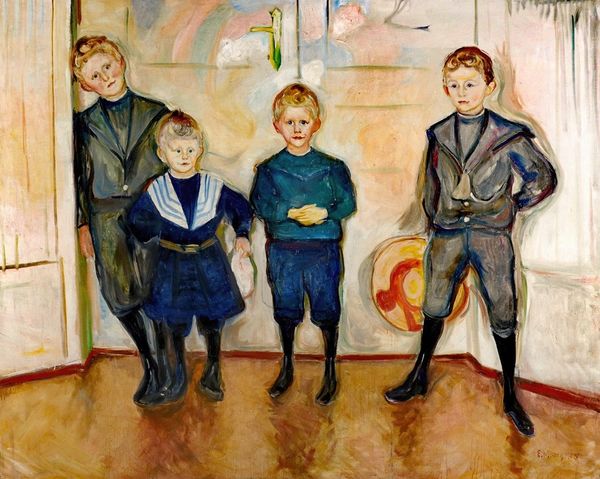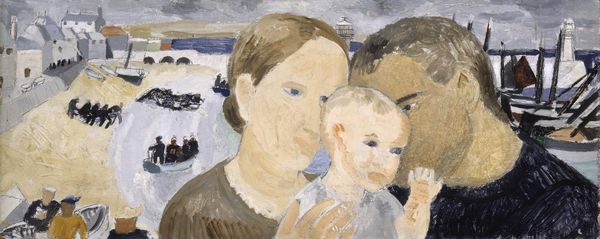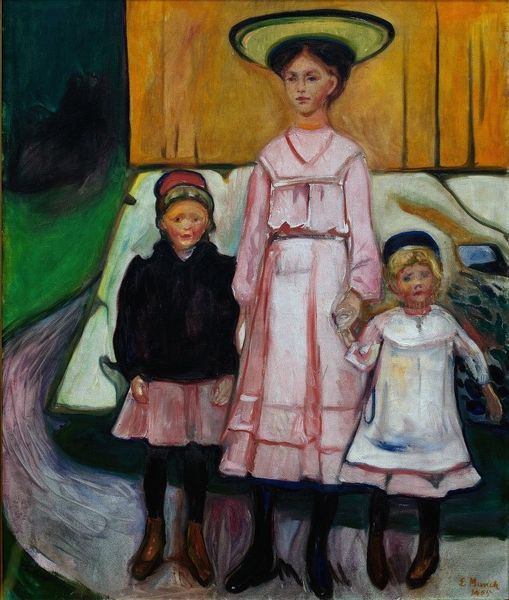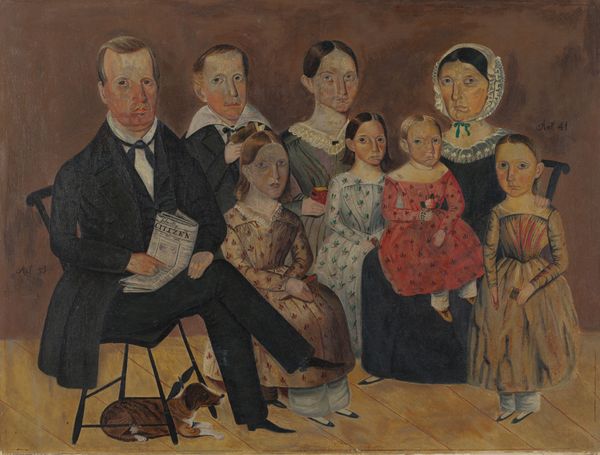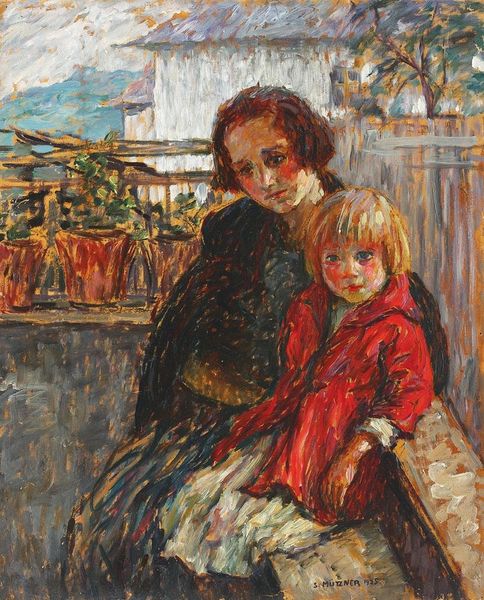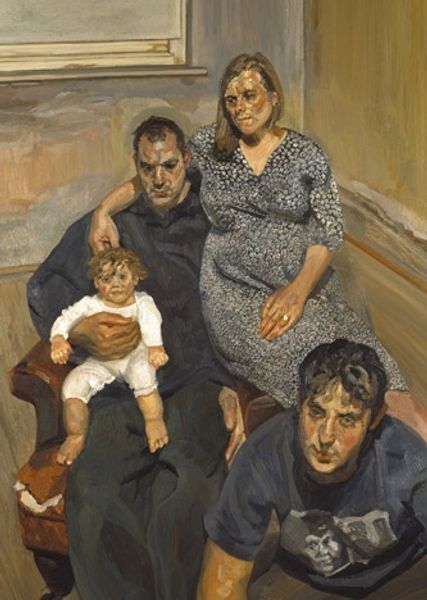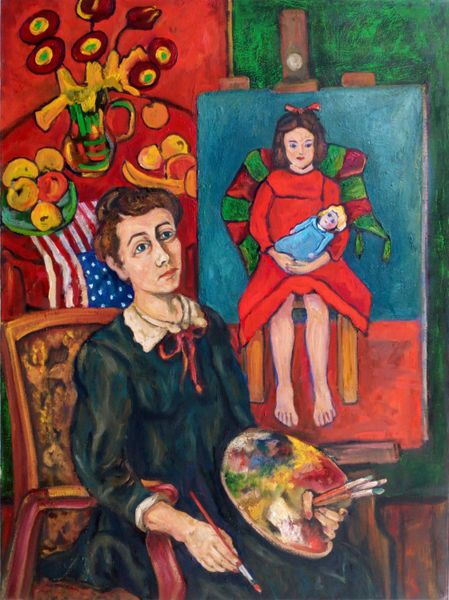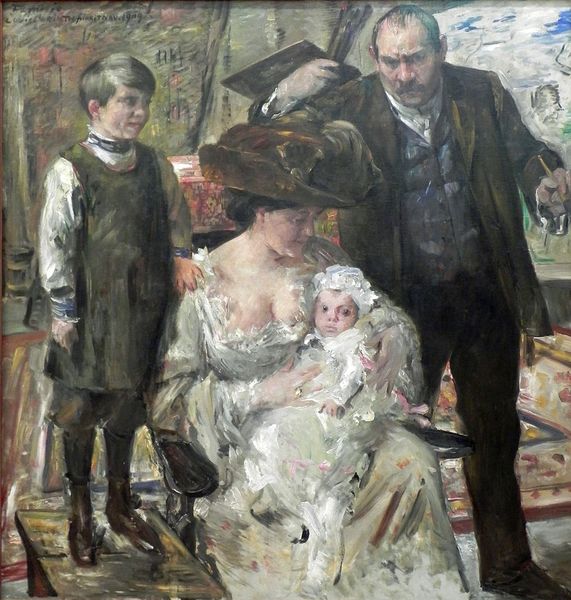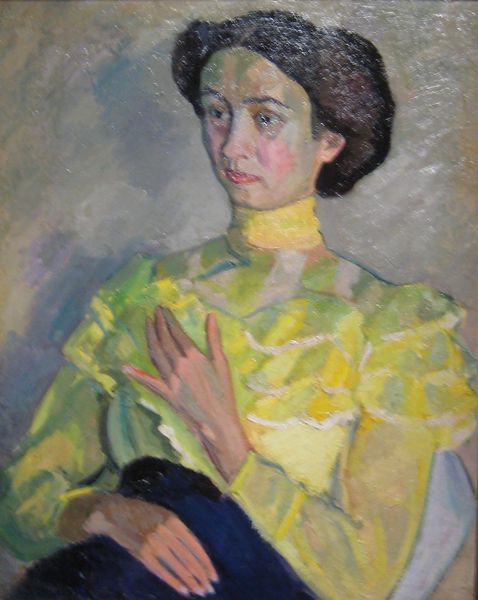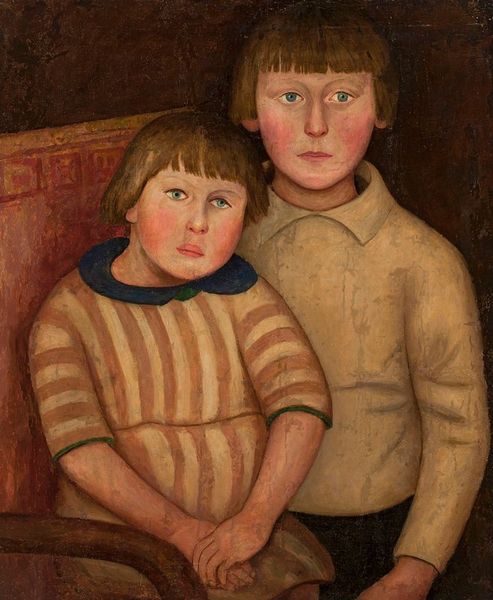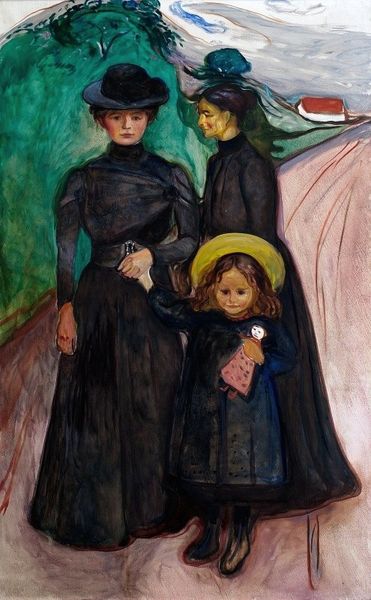
painting, oil-paint
#
portrait
#
painting
#
oil-paint
#
oil painting
#
group-portraits
#
expressionism
Copyright: Public domain US
Curator: Standing before us is Emil Nolde's "Bonnichsen Family," an oil on canvas he completed around 1915. Editor: The initial impression is intense. The blue eyes stare out, a penetrating gaze that's almost unnerving, juxtaposed against the roughly applied color that almost seems to melt across their faces. Curator: Expressionism sought to convey emotional experience over objective reality. Nolde uses distorted forms and exaggerated colors to probe the psychological depths of his subjects and his historical context: a Germany bracing itself during the first World War. Editor: Notice the father's mustache and rigid posture versus the child's frontal gaze, embodying innocence but with an anxious cast in those vivid eyes. I wonder if Nolde was consciously utilizing blue to hint at loyalty, faith, and constancy given what was coming in Europe? Curator: Perhaps. But blue in art also represents melancholy, sadness, and depth – states felt not only in the individual but the collective German conscious as conflict enveloped daily life. This image stands starkly against many of the saccharine family portraits created at the time and acts a statement against traditional familial conventions. Editor: But, too, family portraits as archetypes convey very strong symbolism regardless of period: continuity, lineage, inherited traits or destiny – Nolde's conscious decision to work within the established style still means something, regardless of if it's an embrace or rejection. What do you make of the mother’s somewhat resigned gaze? Curator: A critique, perhaps, of the prescribed role of women at the time, contained and stoic even in such trying conditions. Perhaps too a criticism of her male partner given they look physically adjacent but totally disconnected, but her being literally in line is definitely intentional. Editor: It’s interesting how the colors – raw umbers, blues – create this overall tone of restrained unease. And the almost childlike, even awkward, application of paint lends the subjects vulnerability beneath their social veneer. They almost have halos too, those rounded bald heads above these mortals Curator: Yes, Nolde lays bare the emotional landscape beneath the Bonnichsen family, offering insights into German society poised on the precipice of immense change and collective anxiety. His legacy and our reaction stands as testament to art's ability to speak across eras of revolution. Editor: Definitely—revealing the lasting power of a family tableau to crystallize pivotal cultural experiences even through a non-traditional medium. This, to me, showcases why symbols maintain their emotional power no matter the stylistic approach of any individual artist.
Comments
No comments
Be the first to comment and join the conversation on the ultimate creative platform.
